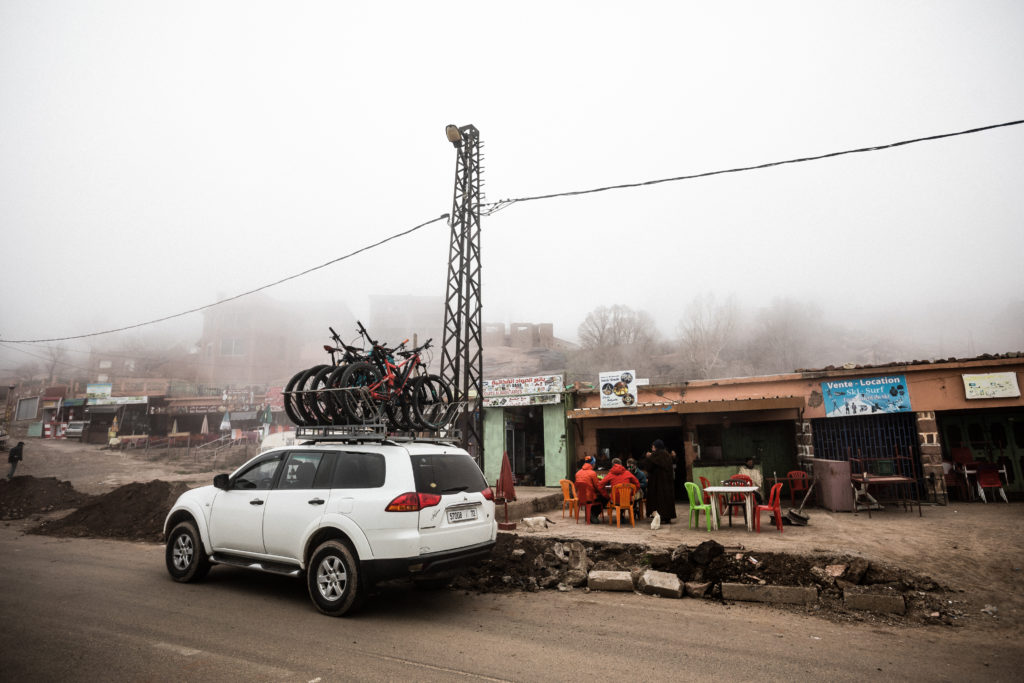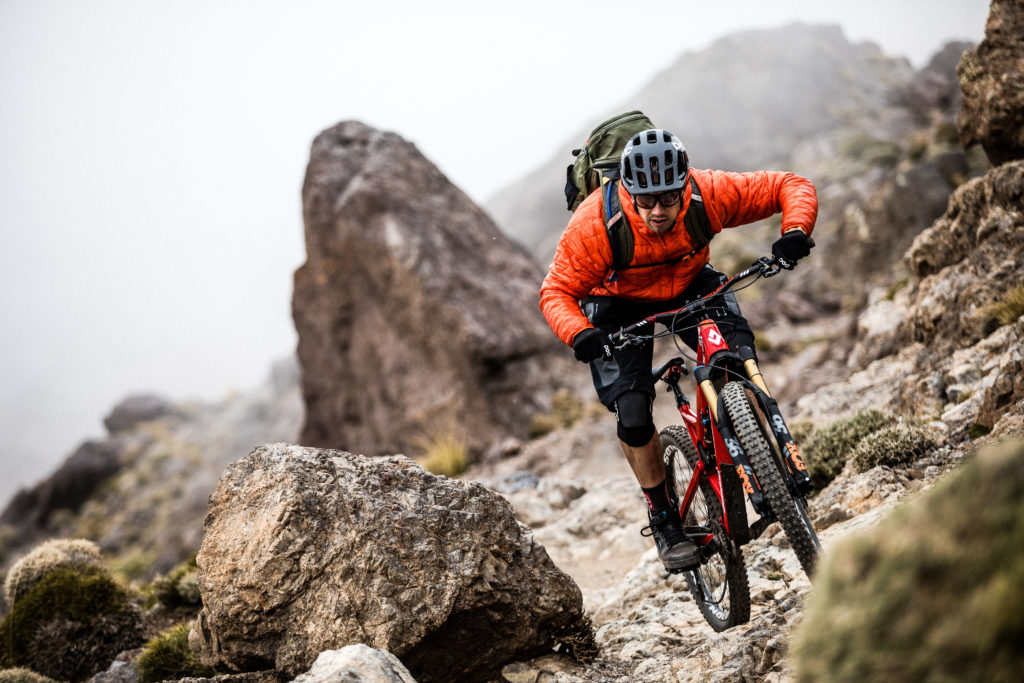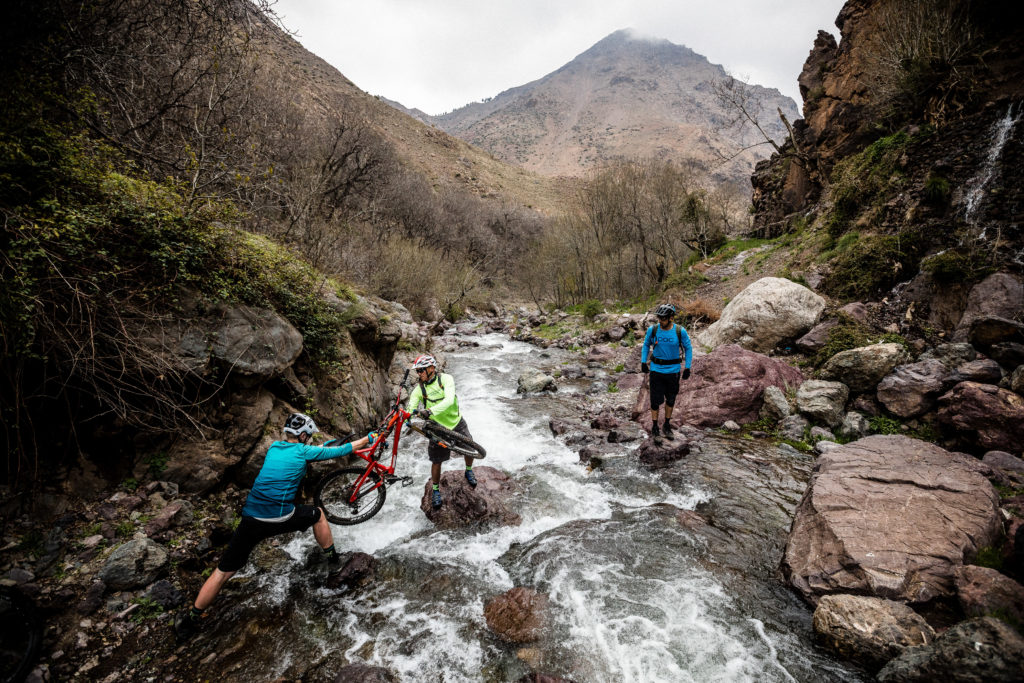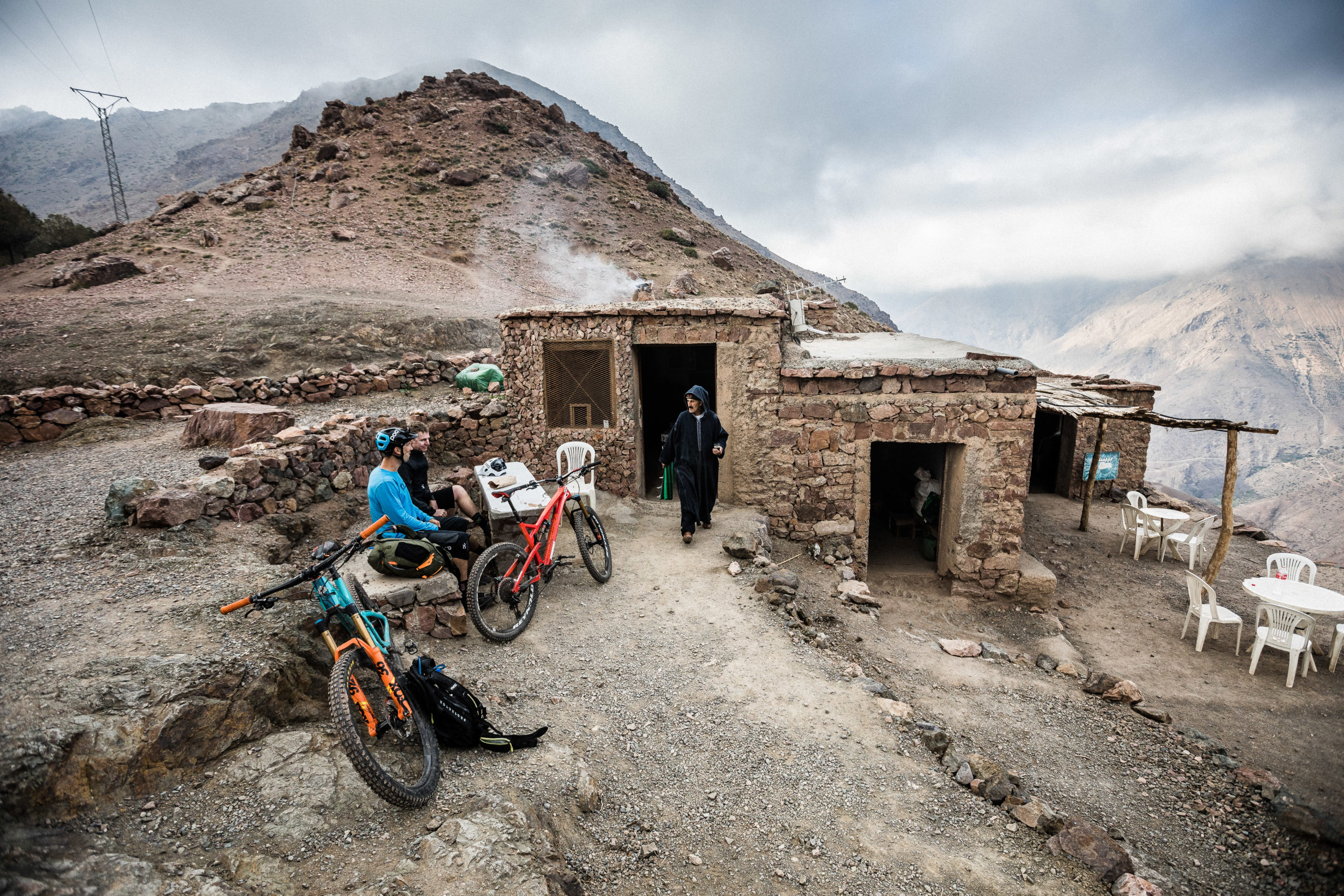
How did we end up riding mountain bikes in Morocco? It started with a conversation between Euan Wilson, owner of H&I Adventures, and me about the wildest places we’ve ridden. After going back and forth with our list of coolest places, including Iceland, Nepal, and Patagonia, we started to talk about where we hadn’t been. Morocco ended up topping the list as a place that we had both dreamed of riding but hadn’t yet. My friend Forrest had gone there a year ago to snowboard in the Atlas Mountains and spoke highly of the country, the people, and the terrain as well. Euan had been there on a quick trip with his wife but no riding. This was going to be our spot. Our trip would be an exploratory mission, with two weeks to ride from village to village through the High Atlas, a mountain range in the middle of the country topping out at 13,671 feet, with the Atlantic Ocean on one side and the Sahara Desert on the other. The mountains are packed with snow in the winter, but they are completely dry all summer. When we traveled over in May, there was still plenty of snow up high, enough that we couldn’t ride over some of the high mountain passes.

As soon as I landed in Marrakech, I realized this was unlike anywhere I had been before. This is a Muslim country, which means no alcohol, for the most part, prayer calls over the loudspeakers five times a day, sometimes as early as 4 a.m., and the covering of skin by both men and women. The rules aren’t as restrictive as in many countries, though, and they never felt like a burden to us as visitors. We simply respected the culture, as that was part of the experience that we came to Morocco for. The best cultural practice that scared me at first was mint green tea. This was served almost anytime and anywhere when we would meet new people. As a frequent world traveler, I know better than to drink the water in foreign countries. I know to wash my hands as often as possible or sanitize and generally do my best to avoid food and drinks that I don’t trust. My trip to Guatemala a year ago left me with parasites that gave me trouble for months after.

Morocco throws all that to the wind. The only saving grace is that the tea is made with boiling water, but I still never trusted the glasses, since it wasn’t boiling by the time it was served! We drank tea with locals in the street market, on a mountaintop, mid-trail, on the side of the road, in a kasbah with dirt floors—you get the idea. We drank tea 6–10 times a day. The procedure is very traditional. First, you make loose-leaf green tea. Then you add sugar, and more sugar, and a little more sugar, and then mix in fresh mint leaves. You pour it back and forth from the teapot to the traditional glasses, which are shot-glass size, and back into the pot multiple times. Then, you finally serve it with a tall pour into a small glass. I’m not normally a tea person, but as they say, “When in Rome.” I did grow to love the Berber whiskey, though, as they jokingly called it, and let my guard down for germs, since I really didn’t have a choice. For the record, I made it home without any digestive-tract distress, so it was well worth the risk!
We stayed in a variety of places as we traveled through the range, including gites at the primitive end, one of which had light bulbs hanging from wires and felt like it could be a CIA black-ops site (we’ve seen too many movies) and beautiful Moroccan riads, the Moroccan word for “hotel,” complete with swimming pools and beautiful gardens. Gites are a number of rooms surrounding a courtyard, and several people share each room with only a cot on the floor and a wool blanket to stay warm. To clean up, you would use the hammam, which is basically a room with a bucket of water heated by a wood fire, which you use to wash yourself. There are also more luxury hammams that are quite nice, but we never ended up experiencing one of these due to our travel plans and goals. The gites are the most affordable, as they are where locals stay when they travel much of the time. The riads were pretty amazing and operated similar to a bed-and-breakfast, with a communal dining area and more private rooms complete with beds and showers. We were traveling with locals and felt like we got the full experience. As we rode through these towns that you can’t drive to, we got to witness a side of Morocco that isn’t often seen and felt the warmth of the local residents who were so welcoming. We drank tea, ate food grown next door to where we were staying and rode the ancient trade routes through the passes.

The riding community in Morocco seems to be growing, although the mountain biking community is lagging behind the road biking community. We saw more road cyclists than expected, but mountain biking is just starting to become a possibility. The bikes are expensive to import, and the only dirt to ride close to Marrakech is on roads. It’s a bit more of a mission to get into the Atlas to ride the real trails, and even then it seems to be mostly big full-day rides, not much that could be done in a short period of time. I would imagine that the area will see more riders in the upcoming years, though, as the community is starting to realize that it’s a great way to bring in money through sustainable tourism. I would go back to ride these trails and visit the country at a moment’s notice. It was truly an unforgettable experience.
12/14/18. Photos by Ross bell H+I Adventures. Full story can be found on Mountain Bike Action.





